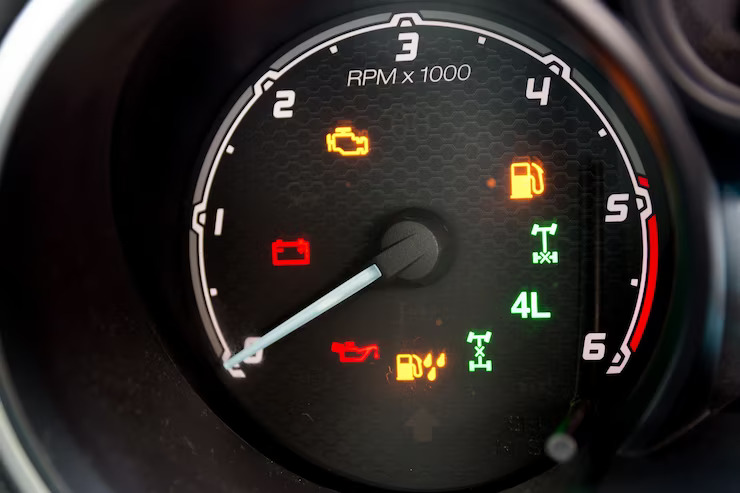Modern vehicles often come equipped with advanced suspension systems that incorporate adaptive features to enhance ride comfort, handling, and stability. These adaptive suspension systems utilize various sensors, control modules, and hydraulic components to adjust the suspension settings based on driving conditions. However, like any complex electronic system, adaptive suspension systems can experience issues that trigger warning lights on the dashboard. In this article, we will explore common problems associated with adaptive suspension system failure warning lights.
Understanding Adaptive Suspension System Failure Warning Lights:
The adaptive suspension system failure warning light typically appears on the dashboard to alert the driver about a malfunction or failure within the suspension system. The exact appearance of the warning light may vary depending on the vehicle manufacturer, but it is usually yellow or red and is accompanied by a corresponding message or symbol.
Common Problems with Adaptive Suspension Systems:
- Sensor Malfunction: Adaptive suspension systems rely on various sensors to monitor road conditions, vehicle movement, and load. If any of these sensors fail or malfunction, it can trigger the suspension system failure warning light. Sensor malfunctions can occur due to wiring issues, sensor damage, or calibration problems. When a sensor is not providing accurate data, the suspension system may not be able to make the necessary adjustments, resulting in decreased performance and the warning light activation.
- Control Module Failure: The control module is the brain of the adaptive suspension system. It receives input from sensors and determines the appropriate suspension settings based on driving conditions. If the control module fails or experiences a software glitch, it can cause the suspension system failure warning light to illuminate. Control module issues can be caused by electrical problems, software bugs, or component failures within the module itself.
- Hydraulic Component Problems: Adaptive suspension systems utilize hydraulic components, such as dampers or air springs, to adjust the suspension characteristics. Issues with these components can lead to the warning light activation. For example, leaking or damaged dampers may result in uneven suspension behavior or decreased ride comfort. Similarly, air compressor or valve failures in systems with air springs can cause the warning light to illuminate.
- Physical Damage or Wear: Physical damage to suspension components or excessive wear can also trigger the adaptive suspension system failure warning light. Damaged sensors, control arms, bushings, or other suspension parts can affect the proper functioning of the system. Additionally, worn-out components may struggle to provide the necessary adjustments, leading to decreased performance and the activation of the warning light.
- Environmental Factors: Extreme temperatures, exposure to moisture, or harsh driving conditions can impact the performance of adaptive suspension systems. Moisture ingress or corrosion in electrical connections or components can cause malfunctions. Similarly, extreme heat or cold can affect the accuracy of sensor readings or put additional strain on hydraulic components.
Addressing Adaptive Suspension System Issues:
Diagnosing and resolving problems with adaptive suspension systems typically require the expertise of trained technicians or specialized service centers. Here are a few steps that can be taken to address these issues:
- Diagnostic Scan: A diagnostic scan using specialized equipment can retrieve error codes from the system, providing insight into the specific problem. These error codes help technicians pinpoint the source of the issue and guide the troubleshooting process.
- Sensor Calibration: If sensor malfunctions are identified, recalibrating or replacing the sensors may be necessary. This calibration process ensures accurate readings and proper communication between the sensors and the control module.
- Control Module Inspection: Control module failures may require inspection, software updates, or replacement. Technicians can diagnose the control module and assess its functionality. Software updates may be available to address known issues or improve system performance.
- Component Replacement: Damaged hydraulic components or worn-out suspension parts may need to be replaced. Technicians can inspect these components, assess their condition, and perform the necessary repairs or replacements.
- Regular Maintenance: Regular maintenance, including inspection of suspension components, cleaning electrical connections, and keeping the system free from debris, can help prevent issues and prolong the lifespan of the adaptive suspension system.
Adaptive suspension systems are intricate systems that contribute to improved ride quality and vehicle stability. When warning lights indicating adaptive suspension system failure appear, it is crucial to address the underlying issues promptly. Sensor malfunctions, control module failures, hydraulic component problems, physical damage, or environmental factors can all contribute to the activation of the warning lights. Seeking professional assistance from trained technicians or specialized service centers is recommended to diagnose and resolve these issues effectively. Maintaining the functionality of the adaptive suspension system is essential for a comfortable and safe driving experience.











